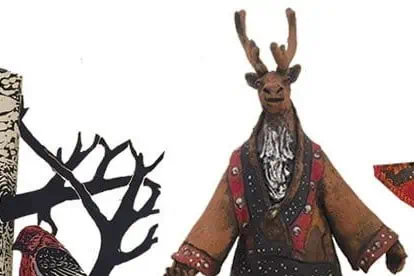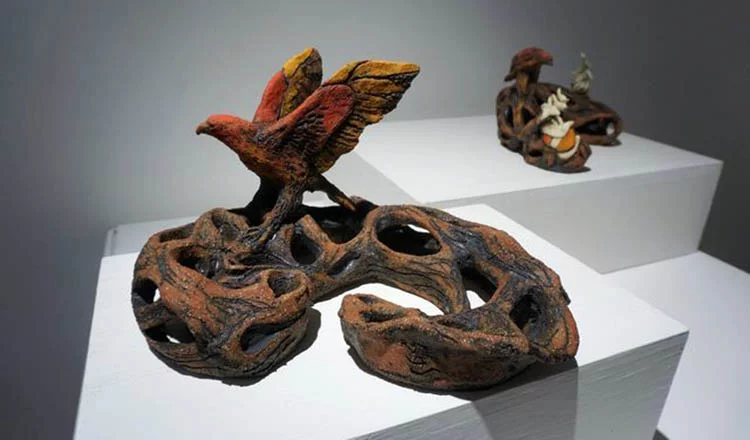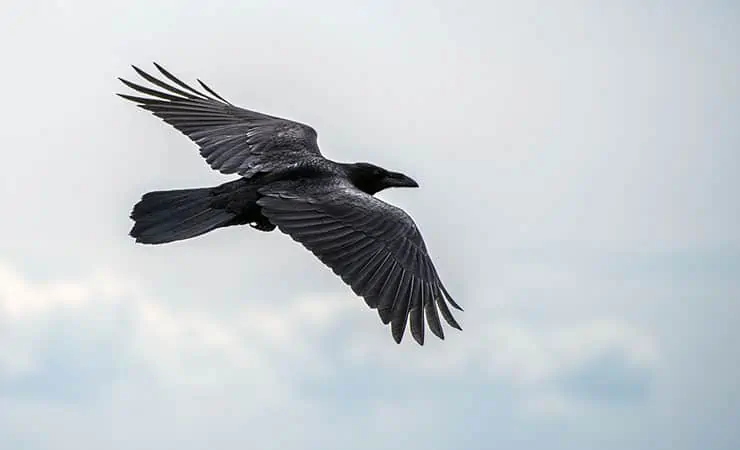Sandra Grace Storey’s show, small changes, grows out of a love of clay and myth.
All but one of the pieces mount on the wall. The clear white gallery walls give them the context to leap or stand with strong presence.
Storey’s faces and animals have always had a quality of aliveness. I think her open approach to clay allows this life to come through the finished pieces.
Storey guides visible fingerprints and natural clay break marks into living human faces, ravens and rabbits. She dances with her medium rather than controlling it absolutely, letting the nature of the clay break out and contribute its voice to the sculpture.
Oxides colour the clay bodies. They don’t coat the surface in a layer of glass like a glaze would, but rather work into the existing clay surface in an organic way, settling into wrinkles and low areas and thinning out higher, emphasizing the pieces’ textures.
Storey has worked the surface texture of her pieces with impressions of rose hips, high bush cranberries and their leaves, and the tips of spruce branches.
In her artist statement she talks about the impetus of primitive art being a “reflection of the human need to understand and belong to the enormous matrix of life.” The cloaks or other garments worn by her characters, printed with Yukon flora, seem a clear metaphor for that need and desire.
She also effectively evokes “a single moment within the ongoing narrative of existence.”
That sense of moment happens most clearly when she depicts two characters interacting with each other.
In Watching the Messenger, a cross-legged woman holds an open book in her oversized hands. Engrossed, she sits on a shelf or floor of layered printed clay, slightly oxidized, that seems like a rug.
A minutely carved raven looks in at her through what seems to be a window. The structure has a shelf in front of it similar to the one the woman is sitting on.
The woman is quite small, the raven almost life-sized. Their difference in size is much like the difference between humans and ravens, reversed.
Another small piece shows a face-to-face encounter. A red fox’s head peeps out of a printed box of clay. A small cloaked figure climbs stairs made of books to reach the place where the two of them behold each other.
After that moment, the story is up to you.
Many other pieces create character more than story.
Faces, human or animal, hover above a garment.
For example, the Warrior Wolf Shaman is made up of three pieces. A bleak-looking wolf face is at the top. (See Leap of Faith for a hopeful-looking wolf face for contrast if you don’t see what I mean.)
Next down the wall hangs a shirt, with thick shoulders and a thinner breast area printed this time with a hexagonal net lace. It comes just to the bottom of where the breasts would be.
Check out the powerful, rough, gestural shoulder-blade sharp arm bits -– that’s what I mean about Storey using the natural character of the clay rather than polishing it away.
Lower yet, the figure wears a skirt of four foxes or baby wolves, three facing up, one facing down, their surfaces printed with spruce. Are they children or prey?
Just breathe works differently again. Set in the small alcove at the back of the gallery, three pieces depicting hands and face tell a story. To the left, hands cover the face, long forearms extending down the wall, with the rough hair full of round-printed holes.
To the right, the fingers fold tightly over the mouth. Less forearm, thumbs on either side of the face, the breath is still held. The printed holes are still there in the head, but there are also lines for the hair.
On the back wall, there are no holes in the head. The fingers relax a little. The mouth is open, an empty space in the clay.
That space evokes the story from the viewer’s imagination.
small changes runs at Gallery 22 above Triple J’s Music till Oct. 15.



